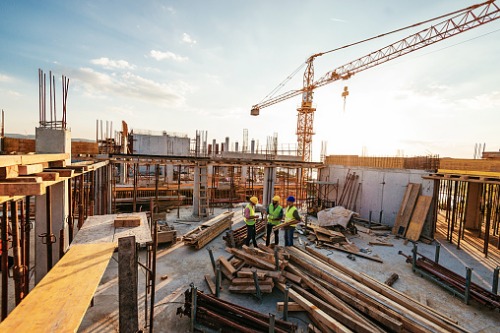2020 will see fewer starts across residential and non-residential sectors

Construction starts are set to fall in 2020 as both the residential and non-residential sectors see declines across most segments of property types.
An analysis from Dodge Data & Analytics forecasts that total US construction starts will drop 4% from 2019 levels to a total $776 billion.
The 2020 Dodge Construction Outlook predicts decline of 6% in the total dollar value of residential buildings and a 3% decline for non-residential buildings.
“The recovery in construction starts that began during 2010 in the aftermath of the Great Recession is coming to an end,” stated Richard Branch, Chief Economist for Dodge Data & Analytics. “Easing economic growth driven by mounting trade tensions and lack of skilled labor will lead to a broad based, but orderly pullback in construction starts in 2020. After increasing 3% in 2018 construction starts dipped an estimated 1% in 2019 and will fall 4% in 2020.”
For the residential sector, the outlook calls for a 3% decline in the total dollar value of single family housing starts in 2020 with the number of units down 5% to 765,000 (Dodge basis). Affordability issues and the tight supply of entry level homes have kept demand for homes muted and buyers on the sidelines.
For multifamily, which was one of the segments that recovered early in the post-recession years and posting 8 years of growth since 2010, Dodge sees multifamily starts falling 13% in dollars and 15% in units to 410,000 (Dodge basis). Multifamily vacancy rates have moved sideways over the past year, suggesting that slower economic growth will weigh on the market in 2020.
“Next year, however, will not be a repeat of what the construction industry endured during the Great Recession. Economic growth is slowing but is not anticipated to contract next year,” added Branch. “Construction starts, therefore, will decline but the level of activity will remain close to recent highs.”
Non-residential starts
The outlook forecasts that the dollar value of commercial building starts will retreat 6% in 2020.
This will be felt most prominently in commercial warehouses and hotels, while the decline in office construction will be cushioned by high value data center construction. Retail activity will also fall in 2020, a continuation of a trend brought about by systemic changes in the industry.
Institutional construction starts will be essentially flat as education building and health facility starts should continue to see modest growth next year, offset by declines in recreation and transportation buildings.
The dollar value of manufacturing plant construction will slip 2% in 2020 following an estimated decline of 29% in 2019. Rising trade tensions has tilted this sector to the downside with recent data, both domestic and globally, suggesting the manufacturing sector is in contraction.
Public works construction starts will move 4% higher in 2020 with growth continuing across all project types. By and large, recent federal appropriations have kept funding for public works construction either steady or slightly higher —translating into continued growth in environmental and transportation infrastructure starts.
Electric utilities/gas plants will drop 27% in 2020 following growth of 83% in 2019 as several large LNG export facilities and new wind projects broke ground.



